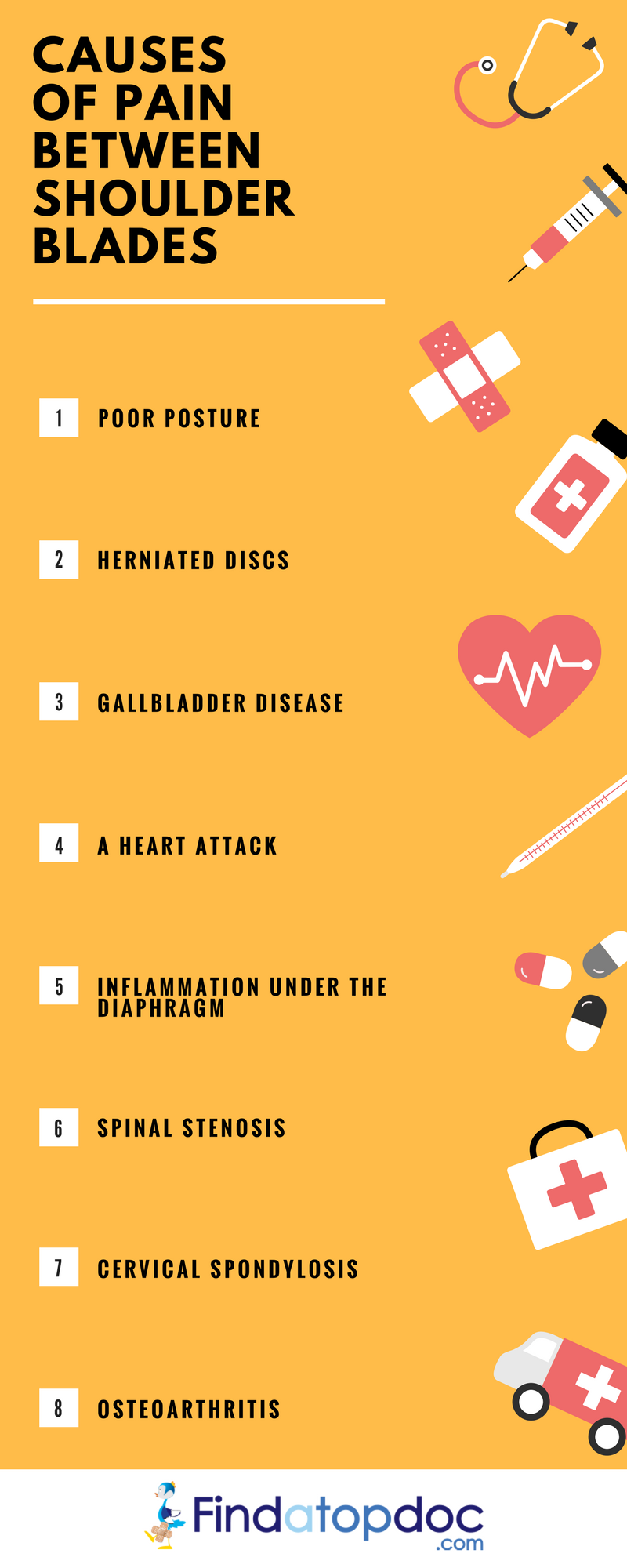
Shoulder blade pain is a very common experience, with causes ranging from simple strains to serious conditions, such as heart attacks or liver problems. Determining the cause of shoulder blade pain can be difficult. People experiencing shoulder blade pain need to know the possible reasons for the pain and what precautions to take.
Causes
There are many possible causes for pain between your shoulder blades. An injury to a muscle or tendon is a common reason for this type of pain. Muscle strains can result from:
- heavy lifting
- poor posture
- working at a computer for extended periods of time
- exercise
Sometimes, you can even strain a muscle during sleep. Injuries to other parts of your body, such as rotator cuff tears, spine fractures, or other injuries that cause trauma, can also lead to pain between your shoulder blades.
Other causes for shoulder blade pain include:
- degenerative disc disease, or a herniated or bulging disc in the spine
- scoliosis
- osteoarthritis in the joints around your neck, spine, or ribs
- spinal stenosis, or a narrowing of your spinal cord
- acid reflux
- fibromyalgia
- certain cancers, such as lung cancer, lymphomas, liver cancer, esophageal cancer, mesothelioma, and cancers that spread to bones
- nerve compression
- Pain, swelling, and bruising may occur over the shoulder blade in the upper back or on the top of the shoulder overlying the coracoid and acromion processes.
- Movement of the arm will increase the scapular pain.
Diagnosis
Your doctor will begin by taking a careful history and doing a physical exam. Many causes of shoulder blade pain can be diagnosed based on your medical history. Doctor will perform a careful physical exam, yet studies suggest that it’s often difficult to diagnose the cause of shoulder blade pain based on physical exam alone. Other tests and studies may include:
- Radiological studies. Radiologic studies may include a chest x-ray, a CT scan of your chest or other regions of your body, an MRI of your chest or other regions, and/or a PET scan if you have a history of cancer.
- Heart tests. If your doctor is at all concerned that your pain may be originating in your heart, tests such as an EKG or stress test may be recommended.
- Abdominal exams. Tests such as an upper endoscopy may be done to evaluate your stomach and small intestine. In an endoscopy, you are given a medication to make you tired and a tube is threaded through your mouth and into your esophagus and stomach, allowing a physician to carefully visualize these areas.
- Bloodwork. Blood tests may also be done. Liver function tests may be run to check for inflammation of your liver. Tests may also be done to look for inflammatory forms of arthritis and other connective tissue diseases.
Treatment
Treatment depends largely on the exact cause of the pain. For simple cases of overuse, strain, or sleeping poorly, a person may be able to try a range of treatments from home. These may include:
- rest
- ice
- medications, such as ibuprofen
- medicated rubs and ointments
- stretching
- massages
If you have shoulder blade pain that persists beyond a few days it is important to make an appointment to see your doctor—even if you have participated in activities that you suspect has caused your pain. If your pain is severe or is accompanied by symptoms of chest pain or shortness of breath call 911 or your doctor immediately.


